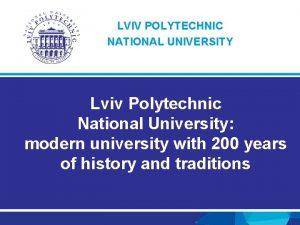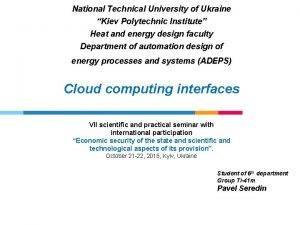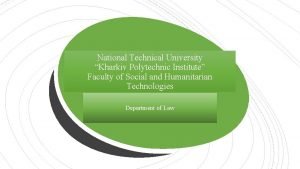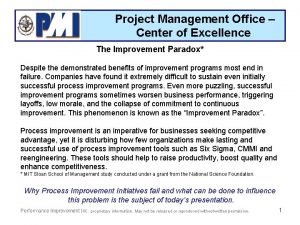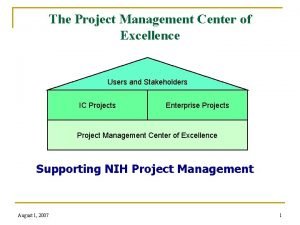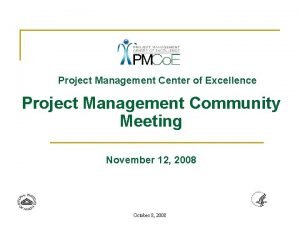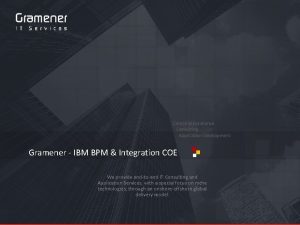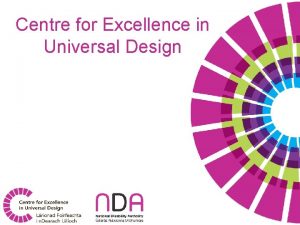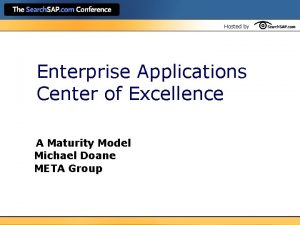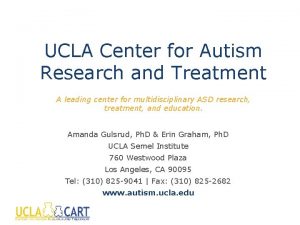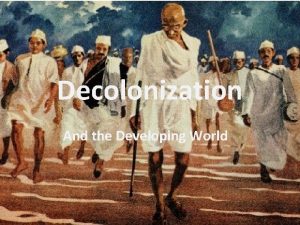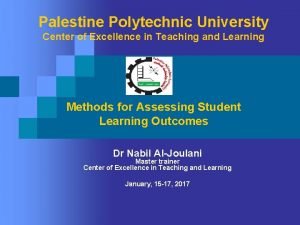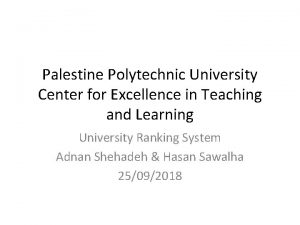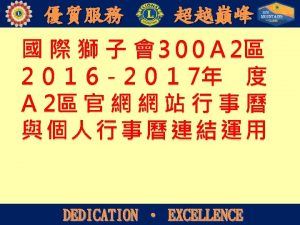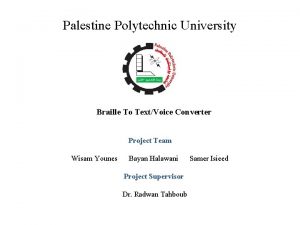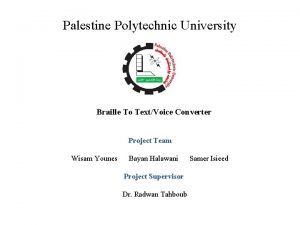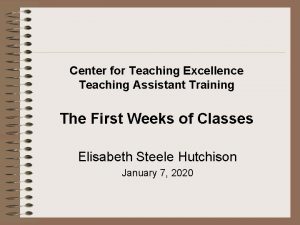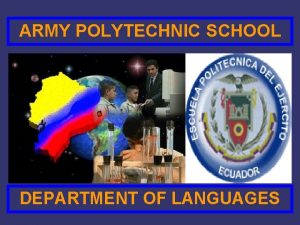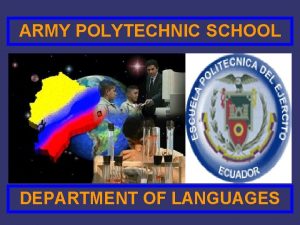Palestine Polytechnic University Center for Excellence in Teaching




























- Slides: 28

Palestine Polytechnic University Center for Excellence in Teaching and Learning Theories in Teaching & Learning in Higher Education Adnan Shehadeh December 2016

Agenda • • • Introduction Levels of thinking about Teaching & Learning How do students learn Theories of teaching & learning in H. Ed, Constructivism & phenomenography Surface & deep approaches to learning Sociocultural approaches to learning Threshold concept. Paradigm shift in higher education.

Your own Theories • What are your theories of teaching & learning: • 1. Learning is………………… • 2. Teaching is…………………

Student & Teacher • What do you think of the student ? What student is? How do you explain their results? • What do you think of the teacher ? What the teacher does? • What the student does?

Levels of thinking about teaching • Level one: What the student is. • good & poor/ knowing the content/ students should attend, take notes , read. . etc. • Teaching is transmitting information • Differences in learning is attributed to differences between students ability, motivation, high school. . etc. • Quantitative way of thinking. • So, everything( assessment, teaching, classrooms. . etc. ) is designed according to this understanding, Transmitting information. • Teacher is , the sage on the stage,

Level 2 • Level 2 focus: What the teacher does. • based on transmission but concepts & understandings not just information. • Learning is a function of what the teacher is doing. • Different skills are needed, materials include complex understandings and required much more than chalk & talk.

Level 3. Focus: what the student does. • Student-centered model of teaching, • The purpose of teaching is learning, • The emphases is on what the student does and how well the outcomes are achieved. Questions: • What are the desired ILO's? • What it means to understand? • What activities needed to have this level of understanding?

Your own Theories • What are your theories of teaching & learning: 1. Learning is………………… 2. Teaching is…………………

How do Students Learn? • Learning was a main theme for the research in psychology for over a century. However, little has been directly resulted in improving learning. • Psychologists were involved in looking for One Grand Theory of Learning rather that the context where people learn. (Biggs 1993 a) • This theory is dead but the role of psychology on education is still alive. • In North America the applications of theories of psychology was top -down ( Gardner MI theory 1999 & Schunk 2002 Motivation individual factors). • In Europe it was bottom-up by observing students in context. • Surface vs. Deep learning (Marton & Saljo , 1976 a, 1976 b)

Level 3 theories are based on two main theories: Constructivism & Phenomenography. • Constructivism: It can be traced to cognitive psychology & Piaget(1950) Today it covers different related forms, individual, social, cognitive, postmodern. • " Learners construct knowledge with their own activities , and that they interpret concepts and principles in terms of the schemata that they have already developed" (Biggs & Tang 2011). • Teachers need to engage with and challenge the existing conceptions of students in order to bring about learning.

Phenomenography: • A term that was used by Marton (1981) to refer to theory built on his studies with Saljo on approaches to learning. • It refers to, " the idea that the learners perspective determines what is learned, not necessarily what the teachers intends should be learned. "( Biggs & Tang 2011) • Outcomes-base teaching & learning. • The emphases is not on defining learning outcomes, but on changing the learner's perspective or the way how he sees the world and how he represent knowledge. • Using various ways of presenting information and perspectives. • Both theories believe that education is about conceptual change that can be achieved by constructing the information rather than acquiring it.

How to make changes • What should we do as teachers to make this change?

When can this change take place? • Intended learning outcomes should be clear to both teachers & students. • Student experience is an important need to achieve the outcomes. • Students feel free to focus on the task. • Students work collaboratively and in dialogue with others. .

Surface Vs. Deep Learning Activity: • Reading a text :

Surface and Deep approaches to learning Surface Approach: • Get rid of the task as soon as possible while appearing to meet the requirements. • Low –level cognitive activities are used. • Students focus on the "signs of learning", the words used, isolated facts, items treated independently of each other. • Negative feelings about the learning tasks: anxiety, boredom, • Several factors encourage this approach: from students side , the intention is to have the minimal pass, non-academic priorities, insufficient time, workload, misunderstanding requirements, high anxiety, inability to understand the content at a deep level. • The teachers: teaching separately, assessing for independent facts, teaching and assessing in a negative attitude, providing insufficient time, creating low expectations of success.

Deep Approach: How to achieve? Arises from a felt need to engage the task appropriately and meaningfully. Students try to use the most appropriate cognitive activities. Focus on meaning, main ideas and themes, Positive feelings, sense of importance , challenge. Several factors encourage deep learning: students intention to engage the task meaningfully, appropriate background knowledge, ability to focus on high conceptual level. • From the teachers side: teaching in a way that bring out the structure of the topic, elicit active response from students, building on what students already know, confronting students misconceptions, assessing for structure rather than for independent facts, teaching and assessing in a way that encourage positive learning, emphasizing the depth of learning rather than the breadth of coverage. Using teaching and assessment methods that supports the outcomes. • • •

Surface Vs. Deep Learning https: //www. youtube. com/watch? v=4 M 6 YZ-i. OU 5 E https: //www. youtube. com/watch? v=k 6 Bmbdz. Pcr. Y

Sociocultural Approaches to Learning: • The focus is on the interaction between learning and the social and cultural environment and how participating in social activity influence learning. • Learners develop new identities as participants in learning communities. • Teachers should give students the opportunities to be engaged in collaborative activities using the same tools of the intended community. (scientists, linguists, …) • These approaches focus on the community dimensions of learning more than on individual learners. • Lev Vygotsky (1978) Zone of Proximal Development (ZPD) two levels that a learner can perform independently and the one that needs scaffolding. • He developed the framework of , communities of practice, appears whenever people get together in an activity. • Learning depends on mutual engagement, access to information, shared ways of doing things

Sociocultural…. . How to be implemented in H. Ed. • Involving students in curriculum design, real-life experiences, • Larger classes limit the engagement. • Create opportunities to have a community of competent and incompetent, novice and experience. • This shows the importance of informal learning.

Threshold Concepts: • Threshold concepts are, " key concepts held in the disciplines that are central to the mastery of their subject. " • It is better to focus on these concepts rather than a lot of content. • The focus is on learning as transformation and changing of existing schemata. ( like constructivism) • How to identify threshold concepts? They are: • Transformative. • Irreversible • Integrative • Troublesome. • They are good for developing the curriculum,

Activity • In groups, What are threshold concepts in your field ?

Reflection • What are your theories of teaching & learning? Teaching is…………………. . Learning is …………………

Section 2. Paradigm Sift in Higher Education

Policy trends in Higher Education • Shifting policy focus from elite to mass • Shifting quality assurance regimes from input to outcomes • Shifts in degree structuring • Shifts in policy expectations: education as commodity in knowledge society, private good economic drive, credentials, education as a social right, widening participation, lifelong learning • Shift in preferred outcomes and styles of teaching: vocationalism in learning and professionalisation of teaching • Shifts in student populations and expectations

Current trends in teaching and learning • Shift from teaching to learning • Shift from input to outcomes and from content coverage to constructive alignment • Shift from knowledge to skills in learning , Increased focus on student-centered teaching and evaluation of teaching. More sophisticated and progressive methodologies • Shift from intuitive and private teaching practice to professional and public teaching practice • Calls for excellent and scholarly teaching based on genuine pedagogical content knowledge

References • • • Biggs, J. (2011) Teaching for quality learning at university. Buckingham: SRHE and Open University Press. Race, R (2015)The Lecturer toolkit: A practical guide to assessment, learning and teaching. New York, Routledge. Baume, D & Kahn, P (2004) Enhancing staff & Educational development. London, Routledge. Cowan, J. (On becoming an innovative university teacher: Reflection in action. Buckingham: SRHE and Open University Press. Fray, H. , Ketteridge, S. , & Marshall, S. (2015) A handbook for teaching & learning in higher education: Enhancing academic practice.

• What causes the surface approach in students? Surface learning Deep learning (Biggs 2003: 15 -16) • an intention to achieve a minimal pass (low or external motivation) non-academic priorities exceeding the academic ones (external motivation) insufficient time, too heavy workload misunderstanding the requirements and criteria for assessment a cynical view of education high anxiety a genuine inability to understand a particular content • an intention to engage in the task meaningfully (motivation, curiosity, determination) appropriate background knowledge and study skills an ability to work at a high conceptual level, starting from principles a genuine preference for working conceptually rather then listing unrelated detail

• What about deep and surface teaching? Surface factors Deep factors • teaching in a way that explicitly brings out the structure of the topic teaching to elicit an active response from the students teaching by building on what the students already know. confronting and eradicating students misconceptions. assessing for structure and understanding not for facts. positive working atmosphere. emphasizing the depth of learning not breadth of coverage. practicing what you preach. • Biggs, John. (2003) Teaching for Quality Learning at University, Buckingham: SRHE and Open University Press • teaching that concentrates on enumeration of points without bringing out the intrinsic structure of the topic assessing for independent facts, such as in short answer and multiple choice questions. teaching and assessing in a way that encourages cynicism providing insufficient time to engage the tasks creating undue anxiety or low expectations of success teaching on too low cognitive level, providing no intellectual challenge
 Tamu elpe
Tamu elpe Lviv polytechnic university
Lviv polytechnic university Pnrpu
Pnrpu Tomsk polytechnic university rector
Tomsk polytechnic university rector Tomsk polytechnic university rector
Tomsk polytechnic university rector Kiev polytechnic university
Kiev polytechnic university Tomsk polytechnic university rector
Tomsk polytechnic university rector Shgm otomasyon
Shgm otomasyon National technical university kharkiv polytechnic institute
National technical university kharkiv polytechnic institute National research tomsk polytechnic university
National research tomsk polytechnic university Teaching excellence and achievement
Teaching excellence and achievement Project management center of excellence
Project management center of excellence How to build a cloud center of excellence gartner
How to build a cloud center of excellence gartner The living well center baltimore
The living well center baltimore Joint culinary center of excellence
Joint culinary center of excellence Project management center of excellence
Project management center of excellence Customer excellence project manager
Customer excellence project manager Icos center of excellence
Icos center of excellence Ibm centre of excellence
Ibm centre of excellence Centre for excellence in universal design
Centre for excellence in universal design Safety centers of expertise
Safety centers of expertise Erp 2
Erp 2 Center of excellence starter kit
Center of excellence starter kit Faa center of excellence
Faa center of excellence Ucla autism research
Ucla autism research How many countries recognize palestine
How many countries recognize palestine Palestine 1967 borders
Palestine 1967 borders Palestine flag
Palestine flag English for palestine
English for palestine

